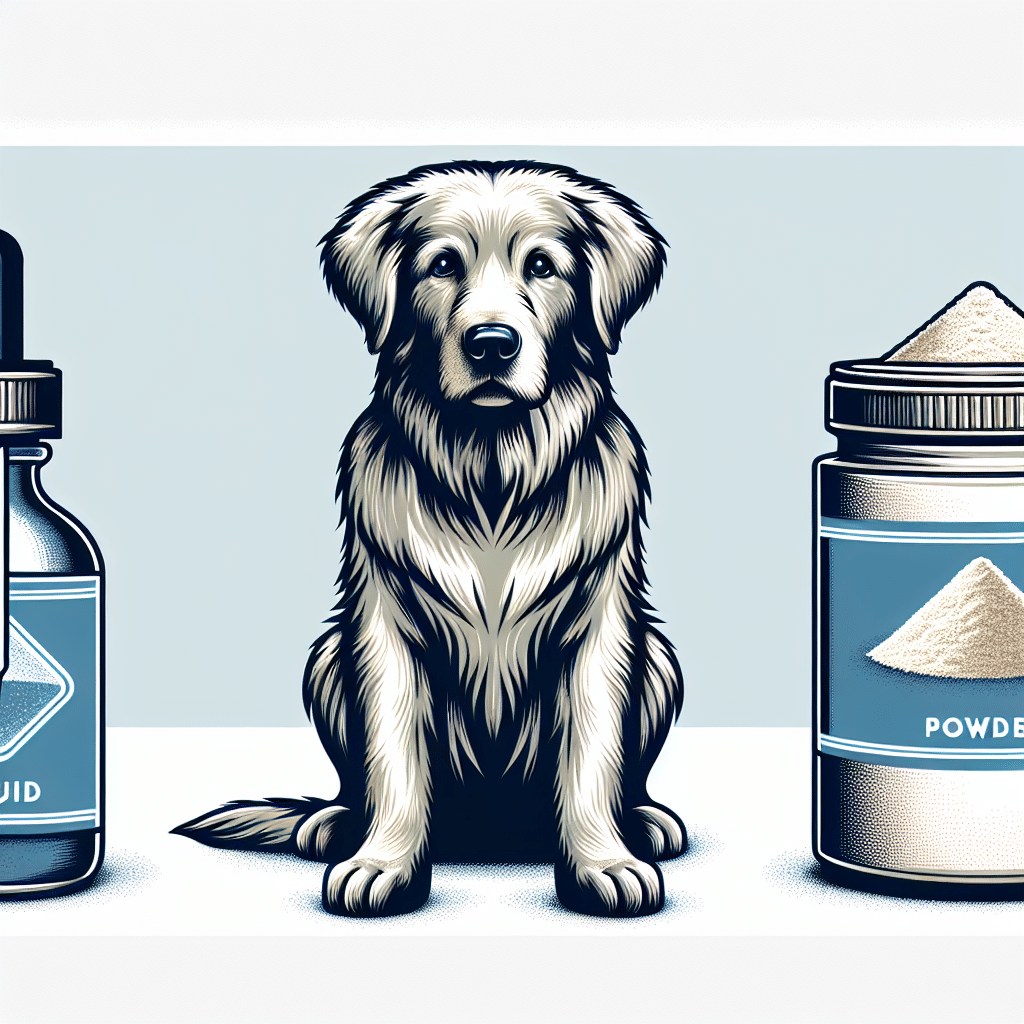Understanding Joint Supplements for Senior Dogs
As our canine companions age, joint health becomes a primary concern for dog owners. Many dogs experience arthritis or other joint-related issues that can affect their mobility and quality of life. Joint supplements are often recommended to help mitigate these issues, and they come in various forms, primarily liquid and powder. This article will explore the advantages and disadvantages of liquid versus powder joint supplements for senior dogs.
Liquid Joint Supplements
Definition and Composition
Liquid joint supplements are typically formulated with key ingredients such as glucosamine, chondroitin, MSM (methylsulfonylmethane), and hyaluronic acid. These components are essential for maintaining healthy cartilage and joint function. Liquids can be designed for easy administration, often flavored to appeal to your dog’s taste.
Advantages of Liquid Supplements
-
Easier Administration: Liquid supplements can be easier to give, especially for dogs that are finicky eaters or who have difficulty swallowing pills. Administering a liquid can be done with a dropper or added to food.
-
Quicker Absorption: Liquids are often absorbed faster by your dog’s system compared to powders. This can be particularly beneficial for dogs experiencing pain or inflammation. Quick absorption can lead to more immediate relief.
-
Hydration Benefits: Some liquid supplements also provide hydration, which can be beneficial if your dog is not drinking enough water. This is particularly important for senior dogs that may suffer from dehydration.
-
Customizable Dosing: Liquid supplements allow for more precise measurements, enabling pet owners to adjust dosages according to the specific needs of their dogs, particularly those with fluctuating weight or health conditions.
-
Flavor Options: Liquid supplements tend to come in a variety of flavors, making them more palatable for some dogs. This can be crucial for ensuring your pet consistently receives their dosage.
Disadvantages of Liquid Supplements
-
Storage Requirements: Liquid supplements typically have a shorter shelf life and may require refrigeration after opening. This can be less convenient for pet owners, especially if space is limited.
-
Potential for Spillage: There is always a risk of spills or leaks when dealing with liquids. This can create messes in your home and also lead to wastage of the product.
-
Cost Considerations: Liquid supplements may be more expensive compared to their powdered counterparts. This is an important factor for pet owners managing on a budget.
Powder Joint Supplements
Definition and Composition
Powder joint supplements contain similar active ingredients as liquid forms, including glucosamine, chondroitin, and others. They are typically packaged in containers that allow for scoopable servings.
Advantages of Powder Supplements
-
Longer Shelf Life: Powder supplements generally have a longer shelf life and don’t require refrigeration, making them easier to store and maintain.
-
Cost-Effective: Powders can often be more cost-effective than liquid formulations. For pet owners looking to save money, powders may be a viable alternative.
-
Versatile Usage: Powders can be easily mixed into a dog’s food, making it versatile for dogs with varying dietary preferences. They can also be used in homemade dog food or treats.
-
Portability: Easier to transport, powdered supplements can be taken on trips without the fear of spills, leaks, or breaking a bottle.
-
Less Waste: As powders can be used down to the last scoop, they typically minimize waste when compared to liquids, which can sometimes go unused after the expiration date.
Disadvantages of Powder Supplements
-
Difficulty in Administration: Some dogs may not take well to powders, especially if they can detect the taste or texture changes in their food. This can lead to missed dosages or refused meals.
-
Longer Absorption Time: Powdered supplements may take longer to dissolve and be absorbed into the system, leading to potentially delayed relief for dogs needing immediate support.
-
Less Flavor Variety: While some powders are flavored, they often do not come in as wide a range of flavors as liquid options. This can result in a lack of appeal for picky eaters.
Ingredients to Consider
Regardless of the form, certain ingredients should be considered when choosing a joint supplement for your senior dog.
- Glucosamine: Supports cartilage health and reduces inflammation.
- Chondroitin Sulfate: Maintains elasticity and resilience in cartilage.
- MSM: Reduces pain and inflammation, contributing to improved joint function.
- Hyaluronic Acid: Important for maintaining joint lubrication.
Choosing the Right Option
The decision between liquid and powder joint supplements ultimately comes down to personal preferences, your dog’s specific needs, and their willingness to accept the supplement. It may be worthwhile to try both forms to determine which one works best for your dog.
Consultation with a veterinarian is crucial prior to starting any new supplement regime. They can provide guidance tailored to your dog’s age, weight, existing health conditions, and lifestyle, ensuring the supplement chosen is safe and effective.
Monitoring Progress
Once you have selected a joint supplement, closely monitor your dog’s response. Look for improvements in mobility, energy levels, and overall quality of life. Recording these observations can assist you and your veterinarian in making future adjustments.
In summary, both liquid and powder joint supplements offer distinct advantages and disadvantages for senior dogs. Understanding these can help you make an informed decision that contributes positively to your dog’s joint health and longevity. Remember, regular vet visits and conversations about joint health are essential as your dog ages.
